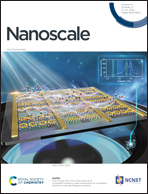Confinement chemistry of FeOx centers for activating molecular oxygen under ambient conditions†
Abstract
Activating molecular oxygen under mild conditions is highly important for developing advanced green technologies and for understanding the origin and running of life as well, which still remains a challenge. In this work, we report on the confinement chemistry for activating molecular oxygen over oxides under mild conditions by presenting the synthesis and characterization of FeOx species confined to the pores of support CeO2 nanospheres. Active catalytic materials are obtained by a controllable three-step method via the formation of porous CeO2 nanospheres that have an average diameter of 120 nm and exhibit a large surface area of 168 m2 g−1 and a pore size of 18.7 nm, confining FeOx in intimate contact with ultra-small Pt particles in pores. The optimized PtOy–FeOx/CeO2–H catalyst showed an excellent performance in the preferential oxidation of CO reactions, as featured by 100% CO conversion at room temperature with almost no attenuation in a prolonged operation, which could not be accessible without pore-confined FeOx centers. Mechanical studies prove that the reaction progresses via abnormal non-competitive adsorption associated with synergistic roles from uniform loading, stabilization of divalent Fe species, surface oxygen activation on CeO2 supports, and the reduced H2 spillover effect on Pt0, making the CO species adsorbed on Ptδ+ easier to be desorbed. The methodology demonstrated here may inspire one to explore more advanced catalysts with high activity at room temperature essential for a wide range of applications.



 Please wait while we load your content...
Please wait while we load your content...